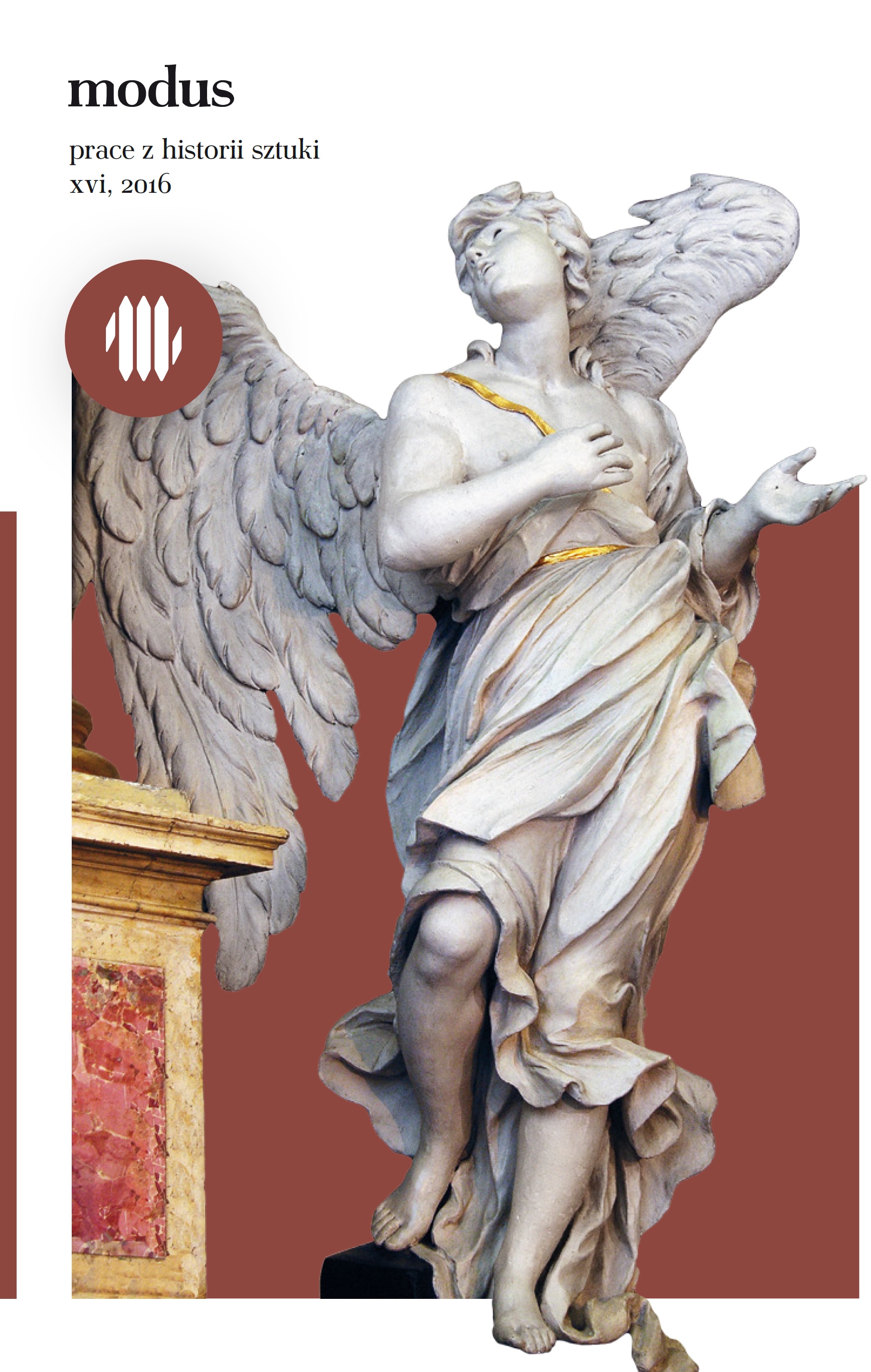Aranżacja prezbiterium kościoła Klarysek w Starym Sączu
The Arrangement of the Presbytery in the Church of Poor Clares in Stary Sącz
Author(s): Michał KurzejSubject(s): Fine Arts / Performing Arts, Architecture, Visual Arts, Sociology of Art
Published by: Wydawnictwo Uniwersytetu Jagiellońskiego
Keywords: iconography and decorative painting symbolized;iconography;religious art; Carol Dankwart; Bartasar Fontana;polish art;
Summary/Abstract: Despite the reconstruction conducted at the beginning of the 17th century,Poor Clares’ Church in Stary Sącz preserved its mediaeval shape. However, it gained newfurnishings, whose most important element were three retables in the apse of the presbytery– the main retable and two side retables with the paintings of St Clare and St Anthony,flanked by the figures of angels. They were made in 1699 when marble was purchased;a stonecutter, a bricklayer, a burnisher and an assistant were employed; and on 29th July1699 an agreement was signed with the stuccoist Baldassare Fontana, who agreed to makesculptural decorations of the altars for 3000 Polish zlotys. Remuneration for the artistsand payment for the materials were given by nuns through the agency of priest SebastianPiskorski. It was also he who mediated in paying 360 Polish zlotys for two paintings for theside retables in the presbytery. The author of these paintings was not noted in the archives.One of the paintings depicting St Clare was acknowledged by Mariusz Karpowicz as a workby Karol Dankwart. Mariusz Karpowicz described the second painting as the re-paintedand did not undertake to determine its authorship. This can as well be confirmed not onlyby the fact that both paintings were paid for, but that they were remarkably similar. Thesepaintings are linked with the use of serious perspective outlines of faces, a method of paintingwith characteristic long brushstrokes visible in the drapery, and also detailed depictionof flowers. It can be inferred that the paintings by Dankwart were created in 1699, that isalmost at the same time as a magnificent Baptism of Christ painted by the very artist tothe order of priest Piskorski for the Cracow church of St Anne. These three works are theonly known works of this artist in this technique, historically connected to Poland. Theyconstitute a separate episode in his oeuvre and are characterized by the highest artisticlevel. We can see it even in the comparison with the most distinguished works from Moraviaand Silesia of the previous decade, among which we can find a substantially dynamic Saint Michael Crushing the Heretics in the post-Jesuit church in Znojmo, a monumentaland dramatic The Judgment of Caiaphas in the parish church in Kożuchów, and a largecollection of paintings from the refectory of Carolinum in Nysa. Therefore, it is probablethat the Polish period was particularly important for the oeuvre of this artist, as it was forthe stuccoist Fontana, who left his most important work in Cracow. Hence, we can assumethat in both cases priest Piskorski played the role of an indirect employer, who could ina special way motivate artists who worked for him. He was connected for many years toPoor Clares as their confessor and prebendary of the church in Grodzisko near Skała, wherehe realized his highly ambitious pilgrimage site, which commemorated Blessed Salomea,the founder of the first monastery of this Polish rule. Piskorski also played an importantrole in the transformation of the Cracow church of Poor Clares dedicated to St Andrew.Ergo, we can assume that also in Stary Sącz he was at least a consultant and a fellow of abbessJordanówna and an initiator of bringing to Stary Sącz the workshop of Fontana andpaintings by Dankwart – the artists who he employed while supervising the constructionand decoration of a new university church dedicated to St Anne. •Translated by Joanna
Journal: Modus. Prace z historii sztuki
- Issue Year: 2016
- Issue No: 16
- Page Range: 15-26
- Page Count: 12
- Language: Polish

